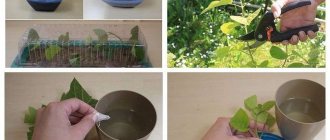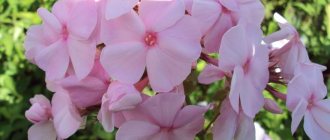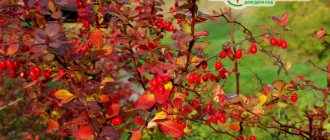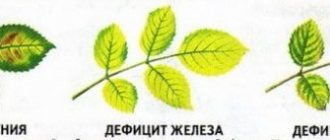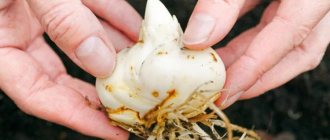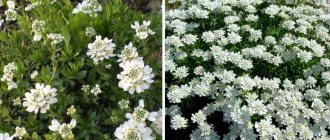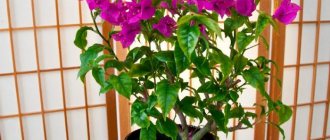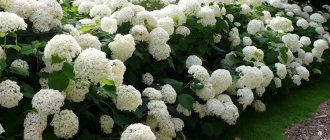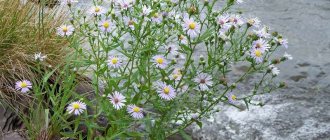Every gardener and gardener dreams of growing a good harvest, which will be a worthy reward for the time and effort spent. It will not be possible to achieve the desired result without fertilizing and protection from pests and diseases. Onion peels for the vegetable garden can be the best help among folk remedies.
It contains a complex of vitamins, mineral salts, carotene, quercetin, and phytoncides. All this has a beneficial effect on plants, activates their development and improves soil structure. Also, onion peelings have a disinfecting effect, which helps protect crops from damage by pests and fungal diseases.
Why I decided to use onion peels in the garden
I never throw away dry skins left over from peeling onions, and I ask my family to do the same. At first this surprises my guests, but when I tell them about the value of this natural fertilizer, a natural remedy for pests, they rush to follow my example at home.
The fact is that onions (including peels) are rich in the following:
- Carotene is a source of vitamin A.
- Vitamins B, E, PP, stimulating vital photosynthesis and the full development of plants.
- Quercetin is a coloring pigment with bactericidal properties.
- Phytoncides are natural antibacterial compounds that destroy pathogens.
Such an excellent composition allows me to find several useful uses in onion peels for the garden, vegetable garden and many indoor plants:
- Organic fertilizer.
- Pest repellent.
- An immunological drug that increases resistance to adverse factors.
- A disinfectant that destroys various pathogens - viruses, bacteria, fungi.
- Material for mulch.
I highlight a whole lot of advantages from this product:
- Complex impact, stimulation of proper development.
- Ecological harmlessness for humans, domestic animals, beneficial insects.
- Improving the structure of the substrate - the husk not only nourishes the soil, but also makes it more airy, soft, and loose.
- Concentrated onion formulations help fight diseases of garden plants and indoor flowers - aphids, copperheads, flies and mites.
- Onion preparations are suitable not only for prevention, but also for treatment and restoration of affected plants.
I will share various uses of onion peels, recipes for healthy solutions that our grandparents used.
Is it possible to put it in a hole when planting plants?
Dry onion peels have bactericidal properties; when they fall into moist soil, they rot and turn into useful fertilizer; their specific smell drives away pests living in the soil from the garden. The peelings, which are placed in holes when planting potatoes, protect the tubers from damage by wireworms and nematodes, and help fight the Colorado potato beetle.
The strawberry weevil, which gnaws the roots and stems of strawberries with its long proboscis, burrows into the soil for the winter. The pest is highly sensitive to odors. To repel beetles from strawberry beds, when propagating bushes, pour peels from strawberries into the holes dug for replanting.
So that the root crops that are lowered into the cellar for storage do not spoil or rot, they are sprinkled with husks. The organic substance functions as a natural antiseptic and provides an antibacterial effect.
Using onion peels for seedlings
The natural remedy is useful already at the initial stage of crop development - seedlings. This is not only a nutritious fertilizer, but also a preventive drug against many diseases:
- blackleg;
- all types of rot;
- bacteriosis;
- powdery mildew and others.
I traditionally water the seedlings with onion infusions. I prepare them like this: pour the dry mass with warm or hot water in an approximate ratio of 1:2. I leave it overnight, and for greater concentration – for a day. I carefully water the seedlings with onion mixture.
If I notice pests on the seedlings, then I add about 1 tbsp to the finished infusion. a spoonful of household or green potassium soap shavings. This component makes the product more sticky, retains it on the leaves, which prolongs the exposure time.
Composition and beneficial properties
Onion peels contain many valuable mineral and biologically active substances that nourish plants, promote their quality development, and protect them from pests and diseases. Before using onion peels for your garden, study its main organic elements:
- phytoncides - concentrated on the surface scales of onions, protect the plant from damage by harmful bacteria and fungi.
- carotene - considered the life-giving force of plants, the largest amount is found in carrots, but there is also plenty of it in onions. The substance helps to grow high-quality seedlings and increase crop resistance to various diseases. Carotene is especially recommended for places with poor ecology and high gas pollution. Remember that the substance destroys harmful microorganisms (especially rot and fungus) and is a natural immunostimulant that suppresses the formation of free radicals.
- B vitamins - the more of them, the more valuable the product is considered. Very useful infusions are obtained from the husks, rich in these vitamins. It is recommended to water young seedlings with nutritional complexes: this helps stimulate growth, strengthen the leaves and stems of plants, and prevent the occurrence of root rot.
- nicotinic acid (vitamins of the PP group) is a necessary component for the high-quality processing of nitrogen and sulfur. The overall development of culture depends on the presence of this substance. Nicotinic acid helps the necessary oxidative reactions occur in living cells and improve the process of root formation, which is very important when keeping plants in heavy soil.
How to use a decoction or infusion
I will share with you my grandmother’s simple but effective recipes that help her grow a royal harvest.
onion infusion for the garden
Decoction
The most popular onion fertilizer is decoction. I will present to you two simple cooking methods:
- A mild decoction. Take 2 full handfuls of dry peel, fill them with 10 liters of water. Bring the mixture to a boil, then simmer for 5 minutes. Cool, leave for 4 hours.
- Concentrated decoction. Immediately fill the onion scales with hot water in a ratio of 1:2. Place the container with the mixture on the fire and bring to a boil. Then leave for 2 days.
I use decoctions as a universal fertilizer for all garden dwellers. Another use of the product is as a natural insecticide. The decoction helps to cope with a whole host of enemies:
- aphid;
- codling moth;
- spider mite;
- flea beetles;
- thrips;
- Colorado beetle.
If the composition is applied as a fertilizer by root watering, then as a preparation against pests - by spraying. For greater efficiency, I dilute fine shavings of laundry soap in it. I pour the mixture into the sprayer tank and treat the affected seedlings for treatment, and healthy ones for prevention. There is no need to think about personal protection here - onion broth is safe for both the gardener and the plantings.
The most effective decoction will be on the day of preparation - try to use it for its intended purpose within 4-6 hours. Otherwise it will go rotten. will be useless for planting.
Onion fertilizers are harmless, so you can use them frequently without fear:
- As a fertilizer: after 5-6 days.
- As a pest control: after 3-4 days.
A little grandmother's secret: the most useful husks are rich in color. It contains more active substance - coloring pigment.
Cold infusion
The simplest recipe is to prepare an infusion that does not require heat treatment. In order for the composition to become useful, it is infused a little longer than the hot remedy. I will present several options for infusions of varying concentrations:
- For 1 liter of water at normal room temperature - 20 g of dry husk. It is enough to leave the mixture for 1 day in a dark place.
- Heat the water to 40-45 C. Place the husks in a thermos or other hermetically sealed container. Fill with water and leave for 15-20 hours in a warm space.
- Fill the onion “scales” with warm water 1:2. Leave for 3-5 days. This is the most concentrated infusion that can also be used to eliminate pests.
The resulting composition can be used for both open and closed ground. As I noticed, cultures respond very positively to it:
- Greenhouse cucumbers. Onion infusion is not only a fertilizer, but a means of preventing the proliferation of pathogenic microflora. The latter prefers a comfortable warm and humid greenhouse climate.
- Tomatoes. The most effective application of fertilizer is at the root. If the plant blooms poorly and does not form an ovary, I water the leaves or spray with onion composition.
It is believed that natural infusions are much healthier than decoctions. After all, the husk stays in water for a longer period of time, managing to release more useful substances. The result is a concentrated and fast-acting solution.
Hot infusion
Another grandmother’s advice is to prepare a hot infusion:
- For a liter container with husks - 8 liters of boiling water.
- I fill the peel with water and leave it for 24 hours.
- I filter the composition and dilute it with plain water (1 part concentrate to 5 parts water).
I use all infusions as organic fertilizers. Their big advantage is versatility. Suitable for most fruit, vegetable and berry plantings:
- cabbage;
- tomatoes;
- pepper;
- zucchini;
- potato;
- raspberries;
- strawberry;
- grape;
- perennial fruit trees.
For all plants, this is replenishment with a complex of necessary micro- and macroelements, a means for loosening the substrate.
How to use husks as fertilizer
As mentioned above, onion scales are a source of vitamins and beneficial microelements. Usually a liquid fertilizer is prepared based on the product. The solution is applied at the root of the plant on pre-moistened soil. This fertilizer can be used throughout the entire growing season of crops: from growing seedlings to flowering and harvesting.
When preparing the soil, you can also add dry husks. But there is a limitation - no more than 3 liters of product per square meter of future plantings. The fact is that excess peeling will affect the taste of the fruit. Cleanings are scattered before digging or plowing the area. This can be done both in spring and autumn. In the ground, they retain their beneficial cleaning properties for six months. This time is more than enough to grow annual vegetable and berry crops.
ON A NOTE. Dry cleaning can also be used as mulch. But be sure to dry the husks and discard those that begin to rot.
Dry onion peel and its uses
The laziest way to use onion peelings is to use them dry. This is an excellent fertilizer and mulching composition. It is not difficult to obtain - collect the husks, dry them in a bright, warm and dry place. Then store in paper bags or bags made of natural “breathable” fabric.
Using the collected cleanings is as easy as shelling pears:
- Feeding. Apply the husks during spring or autumn digging when preparing the beds. Another way is to pour a heap of fertilizer into the bottom of the hole when transplanting seedlings. But here we need a measure - no more than 3 liter cans of husks per 1 m2. Applying more, of course, will not harm the plants. But the problem is different: saturating the soil with onion essential oils changes the taste of the crop. Cucumbers, for example, acquire an unpleasant bitter taste.
- Mulch. Grind the onion “scales” and scatter them around the planting stem. Light material is best used in a greenhouse - in open conditions it can be blown away by the wind. Dry onion peels have a triple effect here: mulching, fertilization and disinfection.
- Disinfection, prevention. Dry husks are very useful for greenhouses - scatter them around the perimeter of the space to prevent the appearance of pests.
Another use for some reason unknown to many of dry onion “scales” is for long-term storage of potatoes, carrots, and celery root. Before moving the crop to the cellar or basement, I cover the root crops with husks. This protects them from rotting - onions are known for their antiseptic, antimicrobial properties.
What useful elements does it contain?
Of course, onion peels are not among the top 3 most important fertilizers for plants. However, it contains useful vitamins (A, B, C, E, PP). In addition, it is a source of phytoncides, beneficial mineral salts and organic acids. The husk contains small doses of trace elements (for example, phosphorus, copper, magnesium). The peels also contain rutin and quercetin, which are needed to increase the sweetness of fruits, and carotenoids that protect against pathogenic fungi.
All this makes onion peel a useful fertilizer. A kind of vitamin complex for plants, an important dietary supplement that strengthens the health and immunity of vegetables, berries and fruit crops.
Using onion peels for indoor plants
In addition to the vegetable garden, I effectively use onion products for indoor floriculture. I prepare the decoction according to the recipe:
- I fill a handful of “scales” with 1.5 liters of water.
- Bring the mixture over low heat to a boil.
- I boil for 7 minutes.
- I strain, cool and use as intended.
I use the following working compositions:
- Soil disinfection. Before transplanting indoor plants, I disinfect the substrate with onion infusion. This treatment destroys pathogens and pest larvae without changing the chemical composition or structure of the soil.
- Fertilizer. For this application, the foliar method is effective - spraying from a spray bottle. Treatment stimulates the growth of green mass and the formation of buds.
The resulting composition is universal and safe - it will not harm even the most exotic of indoor “greens”. But, as with garden plants, only fresh infusion is recommended for them. Using the old one is ineffective - all the useful components have time to “evaporate”.
However, dry peel remains effective for a long time. You can add it directly to the soil mixture when replanting plants. To make onion peels serve as an excellent fertilizer, follow my little secret: water the flowers with slightly warmed water (up to 27-29 C).
Advantages and disadvantages of application
Onion peels for the vegetable garden or garden
Fertilizing with onion peelings is characterized by one drawback, which is the difficulty of collecting raw materials: it must be harvested all winter.
The benefits of fertilizer are as follows:
- Costs are saved because fertilizer does not need to be purchased.
- Effectively affects the growth and development of garden plants.
- Safe for humans, garden crops, animals.
- Fights pests, eliminating the need to use potent poisons and chemicals that are dangerous to plants.
- Cures diseases.
- Used to prevent various diseases of vegetables, berries, and fruits.
- Can be used for compost.
- Thanks to fertilizing, vegetables and fruits are better stored in winter and can easily withstand temperature changes.
- Husk is an excellent mulch, which contains much more nutrients than the foliage of trees, shrubs, and herbs.
- The infusion or decoction is prepared quickly. To do this, you do not need to additionally purchase expensive compounds.
Decoction for pest and disease control
I have already written that onion compositions help effectively eliminate all kinds of garden pests:
- aphid;
- spider mite;
- butterflies and caterpillars;
- copperheads, etc.
I will present the most effective, in my opinion, home remedies made from onion peels to help cope with pests:
- For 250 g of dry husk - 10 liters of water. Leave the solution for 4 days, then strain and use for spraying. To get rid of uninvited guests once and for all, repeat the treatment three times after 5-day breaks.
- Fill a 10-gallon bucket ½ full with husks. Fill with hot water, cover with a lid and leave for 12 hours. Strain the concentrate, dilute it with clean water 1:1. Spray the affected plantings with the working solution.
- The fastest recipe: 1 tbsp. a spoonful of husks and chopped raw onions - per 1 liter of water. Close the container with a lid and leave for 7 hours. Filter and use for spraying.
The prepared formulations are good not only as pest repellents, but also as medicines for diseases:
- Downy mildew. The disease is typical for cucumber plantings. Affects plants at all stages of growth. The peak incidence occurs during fruiting period (July-August). Onion infusion is an excellent preventive remedy. I use it about once a week. If the plants are already affected by the disease, they can be helped by spraying the product.
- Bacteriosis. A disease characteristic of radishes and cabbage. At the first signs (yellowing, blackening of foliage), I again spray the plantings with a preparation made from onion peels.
- Tomato diseases. Spraying tomatoes with onion infusion is not only disinfection, but also a nutritional supplement. When transplanting seedlings, don’t forget to add a little dry husk into each hole. This is a fertilizer for timely growth and fruiting, as well as protection against blackleg, wireworms, slugs and mole crickets.
Let me warn you that onion infusions are not stored for a long time - over time they lose their valuable properties. Therefore, I try to dilute less of the working composition - for a single treatment.
I am convinced that after my story you will also collect onion peels for use in the vegetable garden or indoor garden. This is a universal safe remedy - a fertilizer, a disinfectant solution against diseases and pests. It is very easy to prepare healthy decoctions and infusions. You can use the husk completely dry as top dressing and mulch.
Contraindications
Almost all crops grown in the garden respond to fertilization with onion peels with rapid development, full yield, and increased resistance to disease. The use of an organic product that does not pose a danger to animals, humans, beneficial insects and bacteria allows you to save money on the purchase of mineral mixtures and on the purchase of chemicals against diseases and pests.
When using liquid products in the garden that are prepared from onion peels for watering seedlings, you need to know when to stop and follow the dosage; an excess of fertilizer can cause poisoning in plants. You should not get carried away with frequent fertilizing, so as not to provoke burns on the roots and leaves.
When spraying indoor flowers with onion infusion, an unpleasant odor remains in the apartment for a long time. Fertilizer with peelings is contraindicated for cacti, ficus, and the popular medicinal aloe.
Mulching plantings with onion peelings
To use onion peels as a mulching material, it is advisable to accumulate them during the winter, because a lot of raw materials will be needed for such use. In the spring, thoroughly dried peelings are crushed in any convenient way. After this, the mulch is ready for use.
Seedlings planted in beds are immediately mulched with husks. This is very convenient, because other mulching materials are not always available at this time of year. This protection will last the plants until the end of the season. Mulch protects the roots from overheating, prevents moisture from evaporating too quickly, prevents the formation of a hard crust on the ground, and eliminates the need to weed the bed. At the same time, plants receive protection from diseases.
